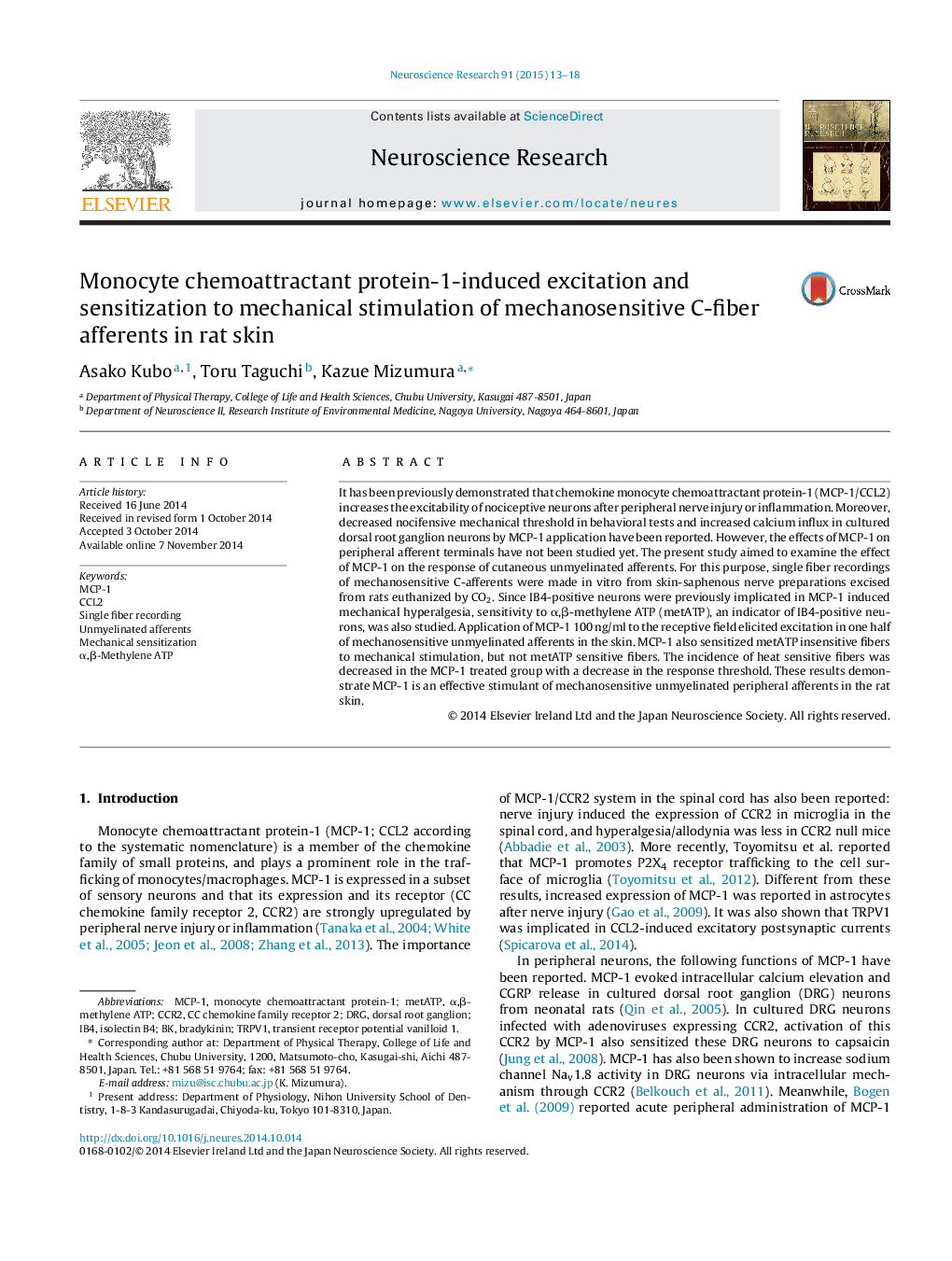| Article ID | Journal | Published Year | Pages | File Type |
|---|---|---|---|---|
| 4351371 | Neuroscience Research | 2015 | 6 Pages |
•MCP-1 elicited excitation in a half of mechanosensitive C afferent fibers of skin.•MCP-1 also elicited mechanical sensitization in the C-afferent fibers.•The mechanical sensitization was observed in α,β-methylene ATP insensitive fibers.•Number of heat sensitive fibers in MCP-1 treated group was significantly decreased.
It has been previously demonstrated that chemokine monocyte chemoattractant protein-1 (MCP-1/CCL2) increases the excitability of nociceptive neurons after peripheral nerve injury or inflammation. Moreover, decreased nocifensive mechanical threshold in behavioral tests and increased calcium influx in cultured dorsal root ganglion neurons by MCP-1 application have been reported. However, the effects of MCP-1 on peripheral afferent terminals have not been studied yet. The present study aimed to examine the effect of MCP-1 on the response of cutaneous unmyelinated afferents. For this purpose, single fiber recordings of mechanosensitive C-afferents were made in vitro from skin-saphenous nerve preparations excised from rats euthanized by CO2. Since IB4-positive neurons were previously implicated in MCP-1 induced mechanical hyperalgesia, sensitivity to α,β-methylene ATP (metATP), an indicator of IB4-positive neurons, was also studied. Application of MCP-1 100 ng/ml to the receptive field elicited excitation in one half of mechanosensitive unmyelinated afferents in the skin. MCP-1 also sensitized metATP insensitive fibers to mechanical stimulation, but not metATP sensitive fibers. The incidence of heat sensitive fibers was decreased in the MCP-1 treated group with a decrease in the response threshold. These results demonstrate MCP-1 is an effective stimulant of mechanosensitive unmyelinated peripheral afferents in the rat skin.
